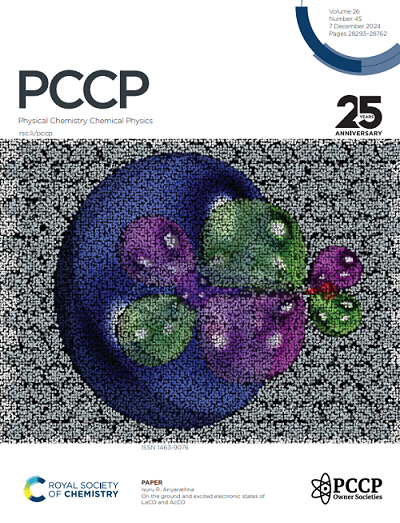Gurney and cylinder wall velocities of explosives: analytical estimates and thermochemical simulations
IF 2.9
3区 化学
Q3 CHEMISTRY, PHYSICAL
引用次数: 0
Abstract
Gurney velocity (uG) and cylinder wall velocity (vs) of energetic materials are calculated using the semi-empirical Cγ method, an analytical model previously developed for CHNO high explosives and presently extended to additional elements and to explosives at low loading density. The re- sults are compared to recent procedures based on thermochemical simulations. Regarding uG , both approaches perform similarly well for organic high explosives, with an average relative error close to 2.6%. However, Cγ underestimates uG for tritonal, an explosive with 20−40wt% aluminium powder. Regarding vs, a newly introduced empirical equation is shown to perform better than the Gurney model, although not as well as a recent correlation involving the detonation energy de- rived from thermochemical simulations, which are still required to predict cylinder wall experiments with optimal accuracy. With regard to the application of present models to the design of new materials, Cγ is not recommended for metal-containing compounds. However, for the high-thoughput design of organic high explosives, it is an invaluable tool allowing fast and reproducible calculations of Gurney energies with state-of-the-art accuracy. A very simple, hackable Python script is provided for this purpose.求助全文
约1分钟内获得全文
求助全文
来源期刊

Physical Chemistry Chemical Physics
化学-物理:原子、分子和化学物理
CiteScore
5.50
自引率
9.10%
发文量
2675
审稿时长
2.0 months
期刊介绍:
Physical Chemistry Chemical Physics (PCCP) is an international journal co-owned by 19 physical chemistry and physics societies from around the world. This journal publishes original, cutting-edge research in physical chemistry, chemical physics and biophysical chemistry. To be suitable for publication in PCCP, articles must include significant innovation and/or insight into physical chemistry; this is the most important criterion that reviewers and Editors will judge against when evaluating submissions.
The journal has a broad scope and welcomes contributions spanning experiment, theory, computation and data science. Topical coverage includes spectroscopy, dynamics, kinetics, statistical mechanics, thermodynamics, electrochemistry, catalysis, surface science, quantum mechanics, quantum computing and machine learning. Interdisciplinary research areas such as polymers and soft matter, materials, nanoscience, energy, surfaces/interfaces, and biophysical chemistry are welcomed if they demonstrate significant innovation and/or insight into physical chemistry. Joined experimental/theoretical studies are particularly appreciated when complementary and based on up-to-date approaches.
 求助内容:
求助内容: 应助结果提醒方式:
应助结果提醒方式:


